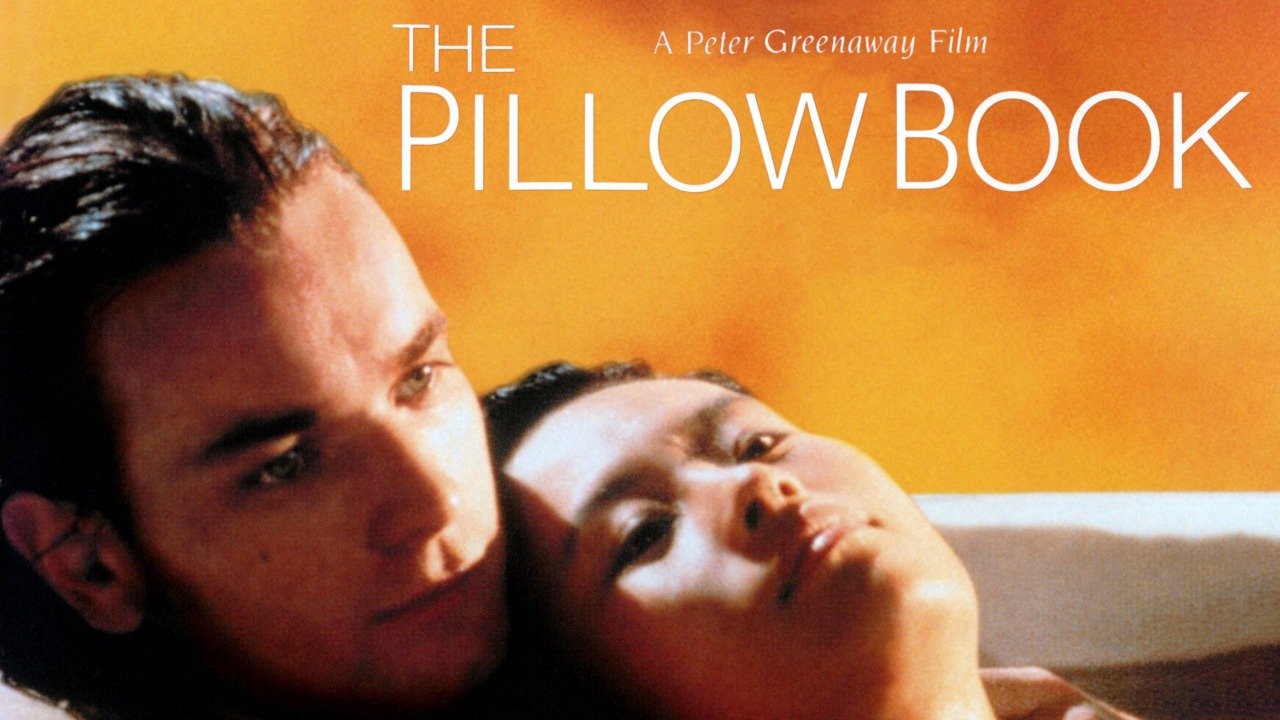
Are you a fan of movies that push boundaries and challenge artistic norms? If so, then “The Pillow Book” is a must-watch for you! This captivating film, directed by Peter Greenaway, is a visually stunning and thought-provoking masterpiece that immerses viewers into a world of sensuality, desire, and literature. Released in 1996, “The Pillow Book” tells the story of Nagiko, a young Japanese woman who seeks to find love and fulfillment by engaging in the ancient tradition of “pillow books,” in which lovers write on each other’s bodies. This unique and mesmerizing film explores themes of identity, eroticism, and the power of words.
Key Takeaways:
- “The Pillow Book” is a visually stunning film that explores love, desire, and the power of written words, captivating audiences with its bold artistic vision and thought-provoking themes.
- This timeless masterpiece continues to inspire contemporary artists and has gained a dedicated fanbase, showcasing the enduring impact of its unique artistic vision and exploration of human desires.
The Pillow Book is a 1996 Film.
The movie was released in 1996 and directed by the acclaimed filmmaker Peter Greenaway.
It is based on the ancient Japanese literature.
The Pillow Book” draws its inspiration from “Makura no S?shi,” a famous book of observations and insights written by the Japanese author Sei Sh?nagon in the 11th century.
The film stars Vivian Wu as the protagonist.
Vivian Wu delivers a mesmerizing performance as Nagiko, a young woman seeking to fulfill her fantasies through writing and calligraphy.
Ewan McGregor plays the male lead.
In “The Pillow Book,” Ewan McGregor portrays Jerome, a translator who becomes enamored with Nagiko and her unique world.
The movie explores themes of love and desire.
“The Pillow Book” delves into the complex nature of human relationships, showcasing the intense desires and passions that drive the characters.
It intertwines art and literature.
The film seamlessly weaves together the visual beauty of calligraphy and the power of words, highlighting the deep connection between art and self-expression.
“The Pillow Book” received critical acclaim.
The movie was praised for its artistic vision and thought-provoking narrative, garnering positive reviews from both critics and audiences alike.
The cinematography is visually stunning.
With its vibrant colors and innovative camera work, “The Pillow Book” creates a visually immersive experience for viewers.
The movie features multiple languages.
In addition to English, the film incorporates Japanese, Mandarin, and French, adding linguistic diversity to its storytelling.
“The Pillow Book” explores the boundaries of sexuality.
The film fearlessly delves into themes of sexuality and eroticism, challenging societal norms and provoking discussions on sexual liberation.
Peter Greenaway wrote the script.
In addition to directing, Peter Greenaway penned the screenplay for “The Pillow Book,” infusing his unique perspective into the story.
The title refers to a collection of erotic writings.
The term “pillow book” traditionally refers to a collection of intimate thoughts, fantasies, and desires written on paper or scrolls.
The film’s soundtrack is atmospheric.
The hauntingly beautiful music in “The Pillow Book” elevates the emotional impact of the scenes, creating an immersive auditory experience.
Vivian Wu learned calligraphy for her role.
To prepare for her character, Vivian Wu dedicated herself to learning the art of calligraphy, enabling her to authentically portray Nagiko’s passion for writing.
The movie explores cultural clashes.
Through the interactions between different characters, “The Pillow Book” delves into the clashes and harmonies between Eastern and Western cultures.
Ewan McGregor gained weight for the role.
Ewan McGregor put on around 30 pounds to accurately portray his character’s transformation throughout the film.
The film is visually bold.
Featuring innovative visual techniques and bold imagery, “The Pillow Book” breaks traditional filmmaking boundaries to create a visually captivating experience.
“The Pillow Book” explores the power of written words.
The film delves into the profound impact that words can have on individuals and how they shape our perceptions of the world.
It juxtaposes the beauty and pain of love.
The Pillow Book” showcases both the euphoria and anguish that love can bring, highlighting the complexities of romantic relationships.
The movie received nominations at the Cannes Film Festival.
“The Pillow Book” was selected for the prestigious Official Competition at the Cannes Film Festival, further cementing its status as a critically acclaimed work.
The film features stunning costume design.
The costumes in “The Pillow Book” are visually striking, reflecting the characters’ personalities and enhancing the overall aesthetic of the movie.
The screenplay incorporates diary entries.
Peter Greenaway weaves diary entries into the narrative, providing insights into the characters’ innermost thoughts and desires.
“The Pillow Book” explores the boundaries of art.
The movie challenges conventional notions of art by pushing the limits of creative expression and exploring unconventional mediums.
It showcases unconventional storytelling.
“The Pillow Book” employs a non-linear narrative structure, using parallel storylines and fragmented scenes to create a unique cinematic experience.
The film highlights the power dynamics within relationships.
“The Pillow Book” delves into the complexities of power struggles and hierarchies within romantic relationships, exposing the vulnerabilities and strengths of the characters.
Vivian Wu and Ewan McGregor have remarkable chemistry.
The on-screen chemistry between Vivian Wu and Ewan McGregor adds depth and authenticity to their characters’ intense relationship.
The movie explores themes of identity and self-discovery.
“The Pillow Book” delves into the quest for self-identity and the exploration of one’s inner desires, painting a complex portrait of personal growth.
The film features stunning location settings.
From bustling cities to serene landscapes, “The Pillow Book” takes viewers on a visual journey through various breathtaking locations.
It seamlessly blends sensuality and intellectuality.
The Pillow Book” strikes a delicate balance between sensuality and intellectualism, enticing viewers with its provocative themes while stimulating thought and introspection.
The movie explores the concept of memory.
The Pillow Book” delves into the power of memory and its influence on personal experiences, showcasing how memories shape our perceptions of love and desire.
The film challenges traditional gender roles.
The Pillow Book” questions traditional notions of femininity and masculinity, redefining gender roles through the complexities of its characters.
It showcases the beauty of calligraphy.
The Pillow Book” celebrates the art of calligraphy, showcasing the intricate beauty and expressive power of written characters.
The movie explores the concept of obsession.
The Pillow Book” examines the fine line between love and obsession, delving into the depths of desire and the lengths people will go to fulfill their fantasies.
Vivian Wu delivers a remarkable performance.
Vivian Wu’s portrayal of Nagiko is captivating and nuanced, bringing depth and vulnerability to the character.
The film features poetic narration.
The poetic narration throughout “The Pillow Book” adds a layer of intimacy and introspection, enhancing the emotional depth of the story.
It blends different art forms.
“The Pillow Book” seamlessly combines various art forms, such as literature, calligraphy, and cinematography, creating a multidimensional sensory experience.
The movie explores the allure of forbidden love.
“The Pillow Book” delves into the irresistible attraction of forbidden love, capturing the intensity and consequences of such relationships.
The film challenges societal expectations.
The Pillow Book” dares to defy societal norms and expectations, exploring unconventional relationships and pushing boundaries.
It showcases the transformative power of writing.
“The Pillow Book” highlights how writing can act as a transformative tool, allowing characters to express their deepest desires and find their true selves.
The movie features symbolic imagery.
“The Pillow Book” employs symbolic imagery throughout the film to convey deeper meanings and explore hidden emotions.
The themes in the film resonate with universal human experiences.
“The Pillow Book” delves into love, desire, identity, and artistic expression, resonating with viewers on a personal and emotional level.
It showcases the emotional complexities of relationships.
“The Pillow Book” delves into the intricate dynamics of relationships, exploring the intertwined nature of love, desire, and vulnerability.
The movie is a sensory delight.
Through its sensual imagery, captivating performances, and evocative soundtrack, “The Pillow Book” transports viewers into a world of heightened sensuality and emotions.
It challenges traditional storytelling techniques.
“The Pillow Book” breaks away from conventional storytelling norms, presenting a narrative that is as visually striking as it is intellectually stimulating.
The film has gained a cult following.
Over the years, “The Pillow Book” has amassed a dedicated fanbase who appreciate its unique artistic vision and thought-provoking exploration of human desires.
It continues to inspire contemporary artists.
The Pillow Book” has had a lasting impact on contemporary artists, influencing their works and pushing the boundaries of creativity.
“The Pillow Book” remains a timeless masterpiece.
Even years after its release, “The Pillow Book” continues to captivate audiences with its bold artistic vision, thought-provoking themes, and exquisite performances.
There you have it! These 47 mesmerizing facts shed light on the rich world of “The Pillow Book.” Whether you are a fan of the film or new to its allure, we hope this guide has deepened your appreciation for this cinematic masterpiece. Happy watching!
Conclusion
In conclusion, The Pillow Book is a visually stunning and thought-provoking film that takes viewers on a journey of self-discovery and obsession. The unique concept of using the ancient Japanese art of calligraphy as a form of communication and expression adds depth and richness to the story. The film’s seamless blend of sensuality, drama, and mystery creates an enchanting cinematic experience.
With its hauntingly beautiful cinematography, mesmerizing performances, and intricate storytelling, The Pillow Book remains a cinematic gem that continues to captivate audiences. Whether you’re a fan of Japanese cinema, interested in exploring unique storytelling techniques, or simply looking for a thought-provoking film, The Pillow Book is definitely worth a watch.
FAQs
Q: Is The Pillow Book based on a true story?
A: No, The Pillow Book is not based on a true story. It is a fictional film inspired by the ancient Japanese pillow book concept and the works of Sei Sh?nagon.
Q: What is the significance of calligraphy in the film?
A: Calligraphy plays a crucial role in The Pillow Book as it serves as a form of communication, expression, and even obsession for the characters. It represents a way to connect with the past, preserve memories, and explore one’s innermost thoughts and desires.
Q: Is The Pillow Book suitable for all audiences?
A: The Pillow Book contains mature themes, nudity, and sexual content. It is recommended for adult audiences who are comfortable with these elements.
Q: How does The Pillow Book explore the theme of identity?
A: The Pillow Book delves deeply into the theme of identity and the quest for self-discovery. The protagonist, Nagiko, embarks on a journey to find her own voice and break free from societal expectations, ultimately seeking liberation and a sense of individuality.
Q: Who directed The Pillow Book?
A: The Pillow Book was directed by Peter Greenaway, a renowned British filmmaker known for his visually stunning and artistically ambitious works.
Was this page helpful?
Our commitment to delivering trustworthy and engaging content is at the heart of what we do. Each fact on our site is contributed by real users like you, bringing a wealth of diverse insights and information. To ensure the highest standards of accuracy and reliability, our dedicated editors meticulously review each submission. This process guarantees that the facts we share are not only fascinating but also credible. Trust in our commitment to quality and authenticity as you explore and learn with us.


